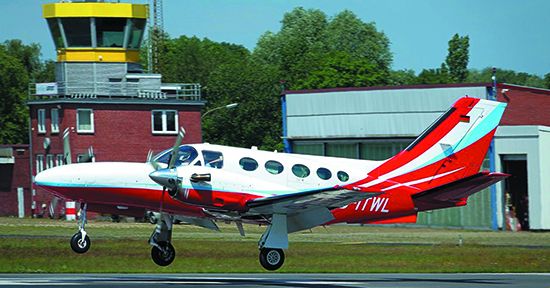With piston-engine Cirrus owners successfully moving up into Vision Jets over the last seven years and turbine aircraft prices slowing what had been meteoric rises, is now the time for you to make that move into turbine power you’ve been considering?
Turbine power is about performance and capability—and we’ve watched and spoken with numerous piston owners who have moved up into the turbine world. What we’ve observed is that while there are potholes that must be negotiated when making the step, er, jump, it’s certainly doable. We’ll go through the considerations—good, bad and indifferent—and then set out our top five step-up turbine birds.
JET OR PROP?
In our opinion, the big step up is from piston to turbine—and it doesn’t matter all that much whether the pilot’s first turbine has propellers on it. The changes that a pilot has to get used to are higher altitudes and an intense preoccupation with fuel versus altitude—and how fast that fuel simply goes away down low. In our experience, pilots adapt to turbine speeds pretty quickly, it’s just a matter of degree. Plus, some of the turboprops are every bit as fast as some of the jets. It’s the exaggerated third dimension that requires a new mindset—getting the air machine up high NOW, so that the planned flight can be completed; what the fuel burn is going to be if ATC brings you down early and what options you have to deal with that circumstance.
With the understanding that there isn’t necessarily a need to take an intermediate turboprop step when moving up, it’s time to start thinking about the right airplane for the flying you intend to undertake.
YOUR MISSION
Take some time and map out the type of flying that you intend to do—and find the aircraft that fit that mission. You don’t want to pay to haul around empty seats nor do you want to constantly be juggling fuel versus people and stuff because your new machine doesn’t really have the useful load you need.
COSTS
That has to be coupled with a realistic look at costs. Just as buying a high-performance piston airplane for we’ll under Bluebook price usually means that you are going to drop more than the purchase price getting it into decent shape—making the same mistake with a turbine machine means that your few hundred thousand dollar mistake can rapidly become a million dollar error.
Turbines cost multiples of pistons to operate because of more rigid maintenance requirements and fuel burns—and purchase mistakes rapidly run into cubic money. We’ve recommended going with a management company when buying and operating a turbine—see our article in the April 2020 issue. If you are exploring a turbine purchase, get help from someone who knows the type—and, never, ever take advice from someone who is trying to sell you something.
INSURANCE
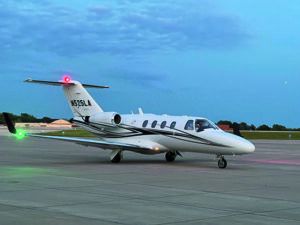
An integral part of your airplane search is going to be finding out whether you can get insurance. Plan on having to jump through some hoops to get insured. If you are over 60, it’s going to be seriously difficult—you’ll need to plan on making a lot of compromises in the type of airplane you chose and be willing to take heavy-duty training and have a mentor pilot fly with you for as long as a year. If you are over 69—according to insurance brokers we spoke with—forget it. It’s not going to happen.
Another consideration is that amateur pilots flying expensive turbine equipment frighten insurance underwriters. You are less likely to get coverage for a new turbine than one that has been around long enough to depreciate a bit—although we recognize that the Cirrus step-up program into the SF50 has been an exception.
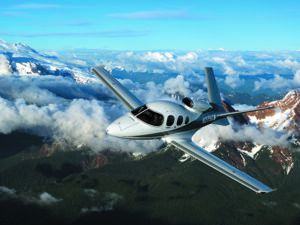
In addition, once things get to the point that you have found the right airplane and want to move on with a purchase, find a way to get some time/dual in the airplane before you fill out the insurance application. Having even 10 hours in type is a lot better when it comes to insurability and the premium you’re going to pay than it is if you have to put a goose egg in the “time in type” column.
TRAINING
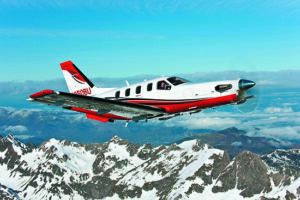
It’s going to be insurance driven. Plan on being required to attend simulator-based initial training as we’ll as annual recurrent training. You’ll need to block off from one to three weeks of your life to focus all of your attention on learning the aircraft systems and getting your skill level up to ATP performance standards.
Based on our conversations with insurance brokers, we think that it is unlikely to the point of certainty that your insurer will approve in-airplane training.
Plan on showing up at school not only instrument current but proficient. Our experience is that the schools know what they are doing and have programs that are designed to get a pilot with a reasonable level of experience up to the needed proficiency to pass a type rating checkride (jets) or meet the school’s graduation standards for turboprops.
If your instrument skills are weak, the schools will provide additional instruction beyond the standard curriculum, but it will be expensive.
While turbine-powered airplanes are easier to fly than their piston-powered brethren, with jets being easier than turboprops, they are much more challenging to flight plan. That will demand some study.
Despite being surprisingly easy to fly, the sheer speed of jets often means that the workload on the pilot in a terminal area can be overwhelming if the pilot does not know the aircraft and the automation cold. That also leads to our recommendation that a turbine step-up is often smoother if the pilot is going from one brand of automation to the same brand.
We also recommend that before you sign up for training, make sure that the simulator has avionics that bear at least a strong resemblance to your airplane.
We have also observed that stepping up within the same aircraft manufacturer’s product line is easier than crossing lines. Piper, Cessna, Beech and Cirrus product design and philosophy tend to have a consistency, making the change from piston to turbine power less dramatic than changing from Beech to Piper, for example.
While the cost of turbine ownership is multiples of piston machines, the reliability is also an order of magnitude better. We hear from owners who went from piston to turbine and were astonished that things simply didn’t break as frequently and their dispatch reliability went up wildly.
PRESSURIZATION
While operating in the flight levels requires internalizing the risks of hypoxia and how to handle pressurization failures, the benefits for you and your passengers are worth it, in our opinion. You can’t get the true value and efficiency of turbine power at low altitudes, so you don’t want to be wearing a mask every time you fly. Unless you have loads to haul at 10,000 feet or less where the Cessna 208 shines, we recommend not even considering the purchase of an unpressurized turboprop.
TWO ENGINES?
We won’t even try to enter the one versus two engine debate. Your level of comfort, not to mention that of your spouse, with the need for redundant power and the substantial cost of a second engine should make that decision easy.
OUR CHOICES
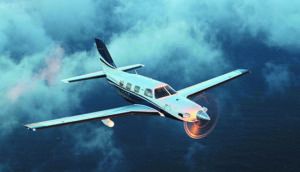
Before we look at our top five turbine step-up aircraft, we’ll take a moment to encourage consideration of the turboprop mods to the Cessna 206, 207 and P210, Beech Bonanza and Duke and Piper Malibu series. The issues of volume available for fuel and turbine fuel consumption mean that most piston-powered airplanes can’t carry enough fuel to get around the block when modified with turbine engines. However, in the backcountry world the Soloy turbine mods to the Cessna 206 and 207 have made those workhorses even better.
The Silver Eagle Cessna P210 mod and the JetProp Piper Meridian mods handle the fuel/weight tradeoff fairly well—a bit better than the turbine conversions of the Beech Bonanza, in our opinion.
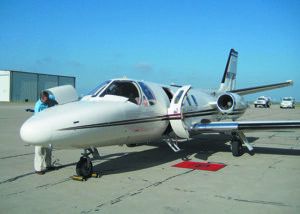
OUR TOP FIVE
So, with that as preamble, and recognizing that our opinions are just that, opinions, here are—in no particular order—what we consider to be the five best first turbines for the pilot stepping up.
• Cessna CJ/525 Series
For pure ease of stepping up to turbine power, we like the Cessna Citation CJ series. We think that its systems and airframe/engines combination meet the design goals of simplicity, economy and performance.
As with any turbine aircraft, the older they are, the more aftermarket avionics have been installed, so be prepared to see some strange installations as we’ll as some superb ones.
• TBM Line
Beginning with the model 700, Socata has been building scorchingly fast single-engine turboprops since 1988. The marque offers a variety of engines, and prices—and all focus on speed. Many will outrun some of the smaller jets. We saw 315 KTAS at a fuel burn of 60 GPH during our review of the Model 850 a few years back.
The cabin has plenty of space for six and baggage, although that will be with reduced fuel.
• Piper Single-Engine Turboprops
The Meridian appeared in 2000 and evolved steadily, recently becoming the M500 and M600. High cruise is 260 knots at FL300, burning 39 GPH. If you can get to altitude quickly and stay there, it is possible to go 1000 NM with VFR reserves. However, with full fuel, plan on no more than 500 pounds in the cabin.
• Cessna 425/Conquest I
We think that the Cessna 425 is the best first turboprop twin for an owner stepping up due to its excellent handling characteristics, well-designed flight deck, good performance and good loading options.
The 425 is most definitely not a turboprop 421—it has distinctly more sophisticated systems, a beefier fuselage and the ability to lift nearly twice the weight.
• Cessna Citation I and II
No, they’re not so old that the original versions were open cockpit, but they have been around, performing reliably for generations of owner pilots since they were certified for single pilot operation in 1977.
They are amazingly easy to fly—in the 1980s a mechanic who had never had a flying lesson had a psychiatric episode, stole a Citation I SP (single pilot) and successfully flew it around the traffic pattern at his home airport. He landed short of the runway, but everything was going we’ll until the jet hit the approach lights. He was not injured.
The I will cruise as fast as 350 knots, while the II is about 25 knots faster. Due to their age, prices are mostly at the bottom end of the turbine spectrum and usually reflect the time and condition of the engines. We think these airplanes offer an inexpensive way to have the opportunity to spend the kind of money required to operate a jet.
CLOSE SECOND
Picking our favorites was tough, because there are so many that are very good. We also greatly like the Pilatus PC-12, Beech King Air 90, Cirrus SF50 Vision Jet and most of the Piper Cheyenne series and dream of owning a Cessna 208 on amphibious floats.
CONCLUSION
If you’ve got the desire and money to move up into the turbine world, are under about 65, have some serious high-performance piston experience, are willing to go through intensive training and work hard at it, you can do it. Based on our conversations with pilots who have made the step, as long as you can tolerate hemorrhaging money, you should have a ball.

